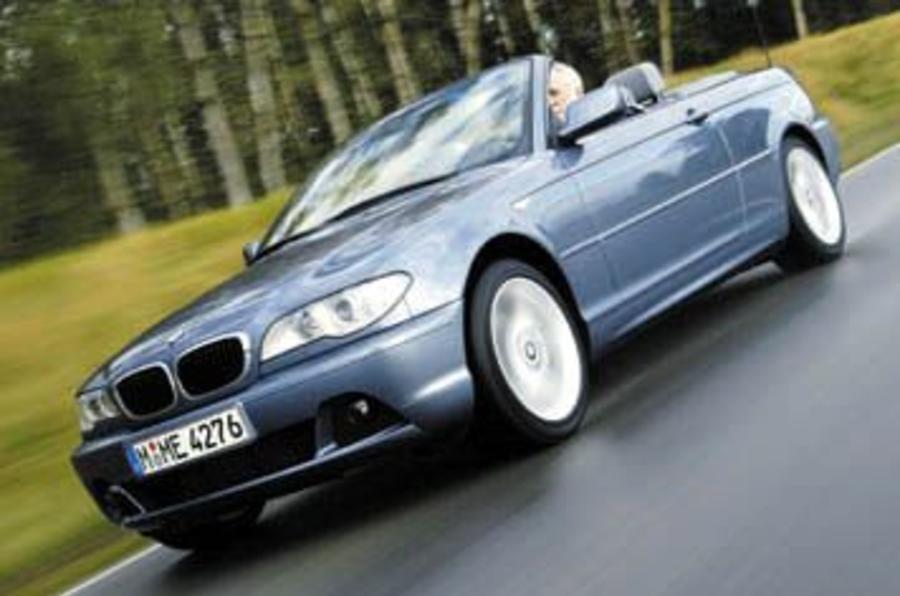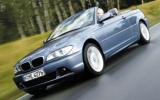Just as BMW is officially releasing photographs of the new 3-series, I’m in a cold and wet Munich driving the ‘new’ diesel Convertible. It’s the current model, of course, and is further proof of BMW’s ability to brilliantly manage the life-cycle of its models. Since the existing cabrio still has two years to run before the new one arrives, why not inject some interest by launching a niche within a niche, especially when there is only one direct competitor?
Once Audi successfully launched diesel variants of the A4 soft-top two years ago, a BMW rival was inevitable. The initial response is the manual-only four-cylinder 320 Cd. It goes on sale across Europe (including the UK) in March, priced £400 above the 168bhp petrol 320 Ci, and available in £28,350 SE and £30,675 Sport versions. For the moment, there is no competitor for Audi’s 2.5-litre V6 A4 Cabriolet – currently the only six-cylinder diesel soft-top sold in the UK – which is not to say we won’t see a 330 Cd before the new 3-series cabrio arrives.
Mechanically, the 320 Cd tracks the equivalent coupé, though the complexity of the power-operated roof and extra body strengthening unavoidably send the scales higher. A 190kg penalty takes the diesel convertible to a weighty 1605kg, forcing the engineers to lower the gearing (2.79 final drive, versus 2.56) to try to maintain a semblance of sparkling acceleration. Even so, the 0-62mph time increases by 0.9sec to 9.7sec, while the combined fuel economy number slips from 49.5mpg to 44.8mpg.
But convertibles are primarily for cruising, right, not flat-out blasts across the moors? I doubt any potential buyers will be discouraged by the performance short-fall, given the BMW’s near draught-free qualities as an open two-seater (wind blocker in place), and its impressive rigidity. I suspect they’ll be more disappointed by the level of oil-burner clatter you hear from the open cockpit when stationary at traffic lights. Triple-layer roof erect, you leave the sound behind on motorways; open, the engine’s drowned out by wind noise.
Encouraged by the rev counter’s 5000rpm red line, I expected the common-rail turbodiesel to deliver a broad powerband that doesn’t demand constant rowing of the gearlever. Except the red line lies. Maximum power of 148bhp is developed at 4000rpm and the engine’s all done at 4300rpm. Eventually, BMW says the crank will spin to 4800rpm, but since changing up at anything more than a couple of hundred revs over 4000rpm slows the rate of acceleration, why bother? Munich couldn’t say why the red line is at 5000rpm.
At the other of the range, the 243lb ft of peak torque arrives at 2000rpm. Though BMW says it has 217lb ft at just 1500rpm, the engine feels listless below 1700rpm, which effectively forces the driver to operate in a narrow, if gusty, band not much wider than 2000rpm. Inevitably that means plenty of gear changing. No hardship, with the BMW’s slick gearchange and tolerant clutch.
The steering’s lighter than I remember on the 320d, and the handling dulled by the extra weight, but this is a better-driving and riding car than the A4 Cabriolet, at least until the Audi gets the A4 saloon’s recent chassis changes.
Convertibles are not about brilliant dynamics and performance. What the 320 Cd does best is play the chic convertible role to diesel perfection. Finding 900 customers for the cars allocated to the UK in 2005 is not going to be difficult.














Add your comment